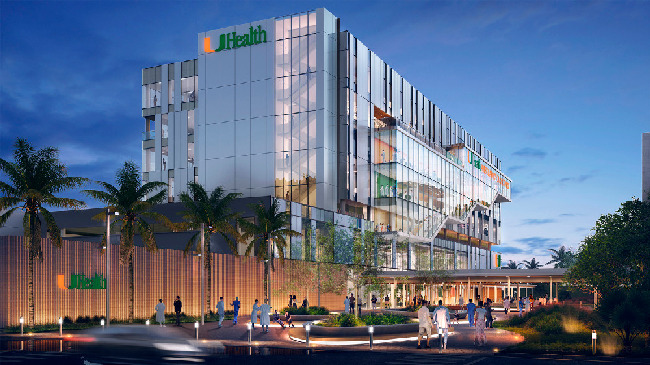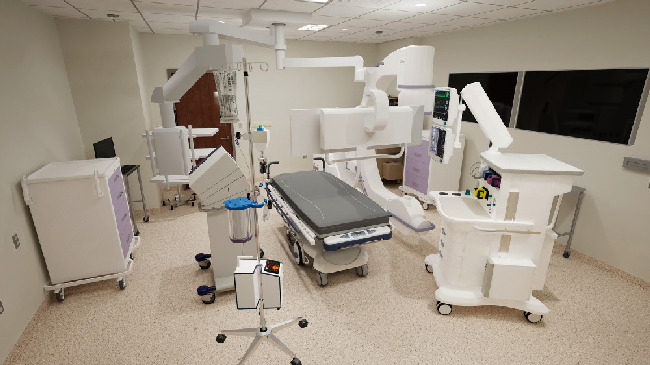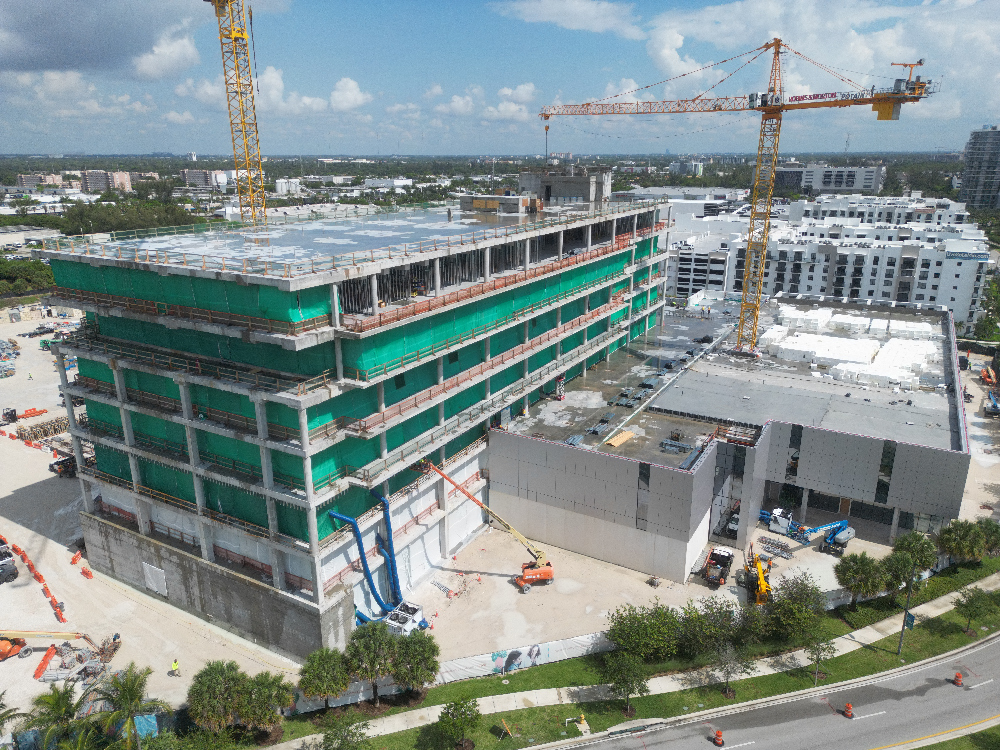Balancing resources for a predictable experience
With the launch of mainstream artificial intelligence, technology entered a new era, inspiring adoption and experimentation among many to whom it was previously inaccessible. The applications seem limitless, leaving industry experts to decipher the implications. AI has changed construction — and our world — forever, so how do we use it effectively and responsibly?
As with all technology and innovation, the primary focus is implementing powerful tools to address our industry’s most critical challenges. It’s no secret the construction industry has been grappling with a labor shortage for decades, requiring exceptional creativity to keep pace with demand. Necessity has been a driving force behind the development of techniques that improve speed to market amid a declining workforce.
With AI, we’re developing processes to increase the speed of tasks, anticipate constructability challenges, harness big data and better futureproof healthcare facilities. In this moment, our challenge — and our opportunity — is balancing the resources dedicated to continued innovation, while honing the knowledge and tools already available to us.

Leaning into opportunity
Many digital tools have already integrated AI to some degree, and that’s only going to increase. We’re seeing this play out in several ways and, at a foundational level, we’re now able to apply a range of available data and analytics to better predict costs and project schedules for our clients; e.g., tools that capture raw images from in-progress construction sites and use AI to track the project’s progress and verify installations. These tools capture and analyze the images to provide a comprehensive overview of a project, translating the data into actionable insights.
Within healthcare construction, these tools are especially useful given the inherent complexity of the work, reducing overbilling and the time consumed with manual progress tracking. These platforms often integrate the latest updates in building code and will flag anything that doesn’t appear to match those configurations.
Our client, HCA Healthcare, uses one such tool on their projects; Vice President of Design and Construction Clint Russell has especially appreciated its ability to document how much material is being used. With that data, he hopes to calculate prefabrication metrics by volume, instead of by work hours shifted offsite. This will support efficient design, project cost, along with schedule management and benchmarking for future projects.
Additionally, we’re using AI to improve virtual reality mockups and models, which has been advantageous for our healthcare projects. By using digital tools to speed the creation — and revision — of virtual reality environments where healthcare staff can “test” the design before it’s ever built, we’re able to reduce scope gaps, rework costs and schedule impacts for clients.

At our seven-story, 363,000-square-foot UHealth at SoLé Mia project in North Miami, Florida, we built virtual reality mockups of the facility’s 13 operating rooms. Staff feedback helped us to optimize the placement of equipment, lighting and outlets, as well as the flow and functionality of the spaces. Revisions made at this very early stage saved approximately $250,000. Better still, a well-functioning space improves healthcare outcomes.
Similarly, robotics are improving the speed of work and reducing human error. This is especially critical in the management of healthcare construction, where installation tolerances are extremely narrow and are essential to patient health and wellness. Examples of how we’re using robotics include trialing a layout robot, using an agile mobile robot to capture existing conditions of a large crawlspace and testing an autonomous work vehicle to deliver material.
Understanding AI
AI is a hypernym for anything that simulates human intelligence. It has been around for decades, but has gained more popularity with the launch of OpenAI’s ChatGPT. Most AI we encounter daily is a “subfield” or application of the concept. The six subfields most relevant to construction include machine learning, natural language processing, computer vision, robotics, expert systems and reinforcement learning. Recognizing the differences between them is essential to understanding AI’s capabilities and leveraging it to its fullest potential.
Machine learning possesses algorithms that learn from data and improve over time. Machine learning can sift through vast historical project data to identify patterns and trends. This can be instrumental in forecasting project delays, assessing risk and even identifying the most efficient methods for resource allocation. At its best, machine learning is similar to having a super-analyst who continually learns from each project to improve the next one.
Natural language processing focuses on understanding, interpreting and generating human language. ChatGPT is one of the most widely recognized and accessible natural language processing technologies available. Many are using natural language processing for research, data compilation and developing templates. One of the greatest challenges with natural language processing tools is that, like humans, they’re fallible. The research they provide may be skewed or biased based on the ways that users have interacted with the tool over time. Since it learns through interactions, it can learn inaccuracies and biases, too. However, new tools on the market are more intentionally integrating academic research and sources to combat misinformation.
Computer vision enables computers to interpret and make sense of the visual world. For example, computer vision can be employed via cameras and drones to survey a construction site, providing real-time insights into project progress and potential safety hazards. Automated quality checks can also be performed to ensure construction follows the planned design and catches errors early. We’re also experimenting with using computer vision to convert site images into actionable 3D models.
Robotics are machines programmed to carry out tasks autonomously or semi-autonomously, often helping to bridge the workforce gap. We’ve used robots to scan existing conditions, transport material and perform layout. For many, robotics are still prohibitively expensive, making their widespread use infeasible in the near term. However, as these solutions grow in sophistication and become more standardized, the cost will likely come down and adoption will increase.
Expert systems are rule-based systems designed to mimic human expertise in specific domains. For example, they can be programmed to make routine decisions that usually require human expertise, such as material procurement schedules, regulatory compliance, cost-benefit analysis or safety checks. Similar to having a consultant available 24/7, expert systems ensure that best practices are followed consistently.
Reinforcement learning is based on algorithms that learn to make decisions through trial and error. It can optimize complex logistical challenges such as supply chain management or onsite resource allocation. By simulating various scenarios, these algorithms learn the most efficient pathways, just like playing a game to get the highest score, but for logistical efficiency.
As these subfields evolve, they’ll continue to impact task efficiency, sustainability and safety while creating new opportunities for growth and development.
Future influence of AI
Every day, we hear more about new AI integrations, which will continue to become larger — and more seamless — parts of tools and devices that we use daily, demonstrating the rapid pace at which AI is becoming critical to our workflows. In partnership with our trade contractors, design teams, regulatory agencies, clients, cities and municipalities, we have the opportunity to create groundbreaking collaborative databases. The collection of this data, and the subsequent interpretation of it, would allow us to predict and track outcomes of the construction process and the eventual built environment. Some of these outcomes may include a healthcare facility’s energy efficiency, improved lifecycle analysis, predictive maintenance schedules, city resource use, safety analysis and more.
Over time, we can lessen our environmental impact, make construction work safer, responsibly manage natural resources and proactively maintain buildings, which both reduces waste and large overhead surprise costs. While we may not reap all these benefits in our lifetime, these steps also lead to near-term results: AI will help us to provide a more predictable construction experience for our healthcare clients, allowing them to confidently advance the construction of facilities that will provide life-saving care.
Photos courtesy of Robins & Morton




